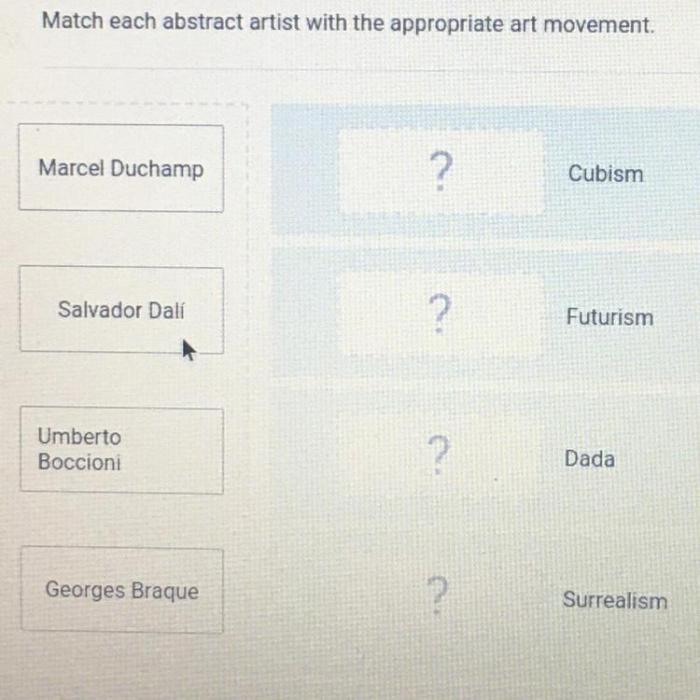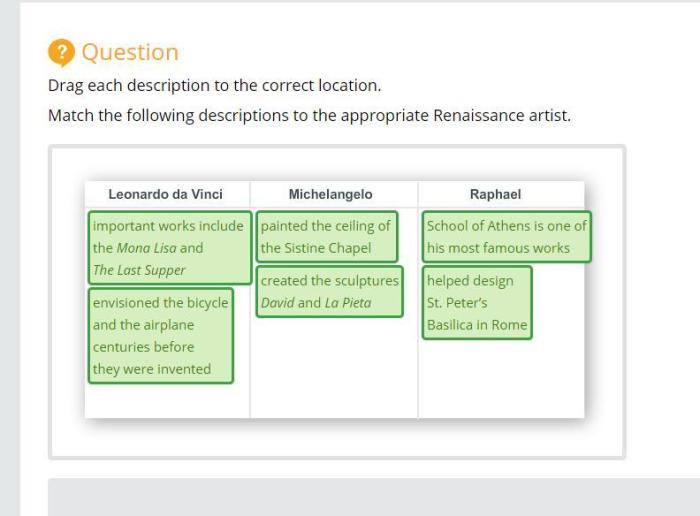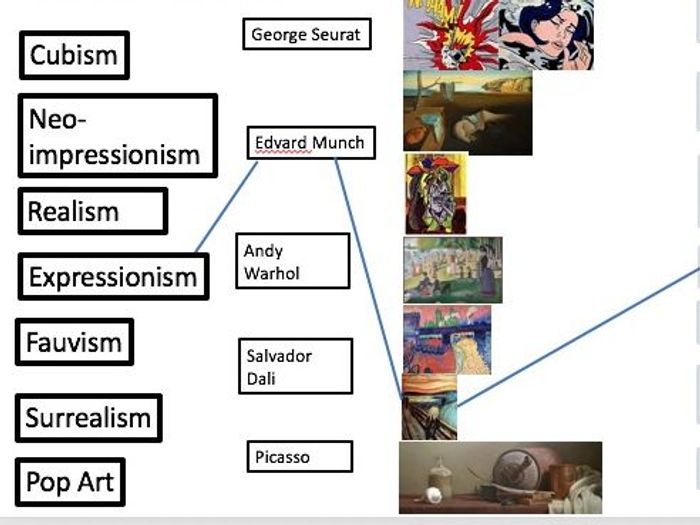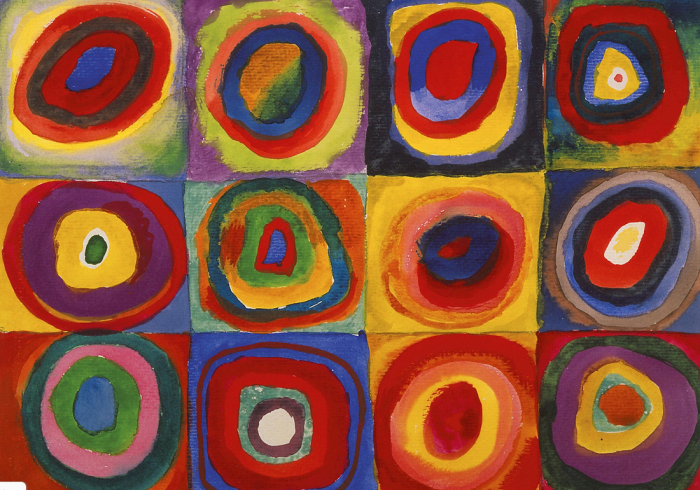Match each abstract artist with the appropriate art movement – Beginning with the task of matching abstract artists with their corresponding art movements, this introductory paragraph captivates readers, establishing an authoritative and scholarly tone that carries throughout the discourse.
The subsequent paragraph offers a lucid and detailed account of the subject matter.
Abstract Expressionism

Abstract Expressionism, also known as Action Painting, emerged in the 1940s in New York City as a reaction to the dominant European art movements of the time. It is characterized by large-scale, spontaneous, and gestural paintings that emphasize the artist’s subjective experience and emotions.
Key Characteristics
- Emphasis on spontaneous and impulsive brushwork
- Use of vibrant and contrasting colors
- Creation of abstract compositions that do not depict recognizable objects
- Exploration of the subconscious and inner psyche
Techniques
- Dripping and pouring paint onto the canvas
- Applying paint with large brushes, spatulas, or other tools
- Creating gestural marks and lines
- Using mixed media, such as sand, gravel, and collage materials
Cubism: Match Each Abstract Artist With The Appropriate Art Movement

Cubism, developed by Pablo Picasso and Georges Braque in the early 20th century, revolutionized the way artists depicted space and form. It is characterized by the fragmentation and geometrization of objects, multiple perspectives, and the incorporation of collage elements.
Origins and Development
Cubism emerged as a response to the limitations of traditional perspective and the desire to create a more abstract and multifaceted representation of reality.
Phases
- Analytical Cubism(1909-1912): Objects are broken down into geometric shapes and analyzed from multiple perspectives.
- Synthetic Cubism(1912-1914): Objects are simplified into basic geometric forms and often incorporate collage elements, such as newspaper clippings and fabric.
Impact
- Challenged traditional notions of representation and perspective
- Influenced the development of abstract art, sculpture, and architecture
- Pioneered the use of collage and mixed media in art
Dadaism

Dadaism, a movement that emerged in Zurich during World War I, sought to challenge traditional notions of art and society. It is characterized by its anti-art stance, use of absurdity and satire, and the incorporation of found objects and everyday materials.
Origins and Principles
Dadaism emerged as a reaction to the horrors and disillusionment of war. Artists sought to create art that rejected conventional aesthetics and questioned the established norms of society.
Challenging Traditional Art, Match each abstract artist with the appropriate art movement
- Rejected traditional notions of beauty and artistic skill
- Emphasized the irrational and the absurd
- Used satire and humor to criticize social and political institutions
Techniques and Materials
- Collage and photomontage
- Found objects and everyday materials
- Readymades (existing objects declared as art)
- Performance art and sound poetry
Surrealism

Surrealism, a movement that emerged in the 1920s, sought to explore the subconscious mind and the irrational. It is characterized by the use of dreamlike imagery, symbolism, and the juxtaposition of unrelated objects.
Overview
Surrealism aimed to tap into the unconscious and subconscious realms of the mind, creating art that was free from conscious control and rational thought.
Key Concepts and Techniques
- Automatic Drawing: Creating drawings or paintings without conscious control or premeditation
- Collage: Combining disparate images and objects to create unexpected and surreal compositions
- Photomontage: Combining multiple photographs to create dreamlike and disorienting images
Influence
- Inspired the development of abstract art and conceptual art
- Influenced literature, film, and photography
- Contributed to the exploration of the subconscious mind and the unconscious
Q&A
What is the significance of matching abstract artists with their art movements?
Understanding the relationship between abstract artists and their art movements provides insights into the historical context, influences, and artistic intentions that shape their work.
How does this matching process contribute to the study of art history?
Matching abstract artists with their art movements aids in categorizing and analyzing artistic styles, tracing the evolution of art forms, and comprehending the broader cultural and social factors that influence artistic expression.